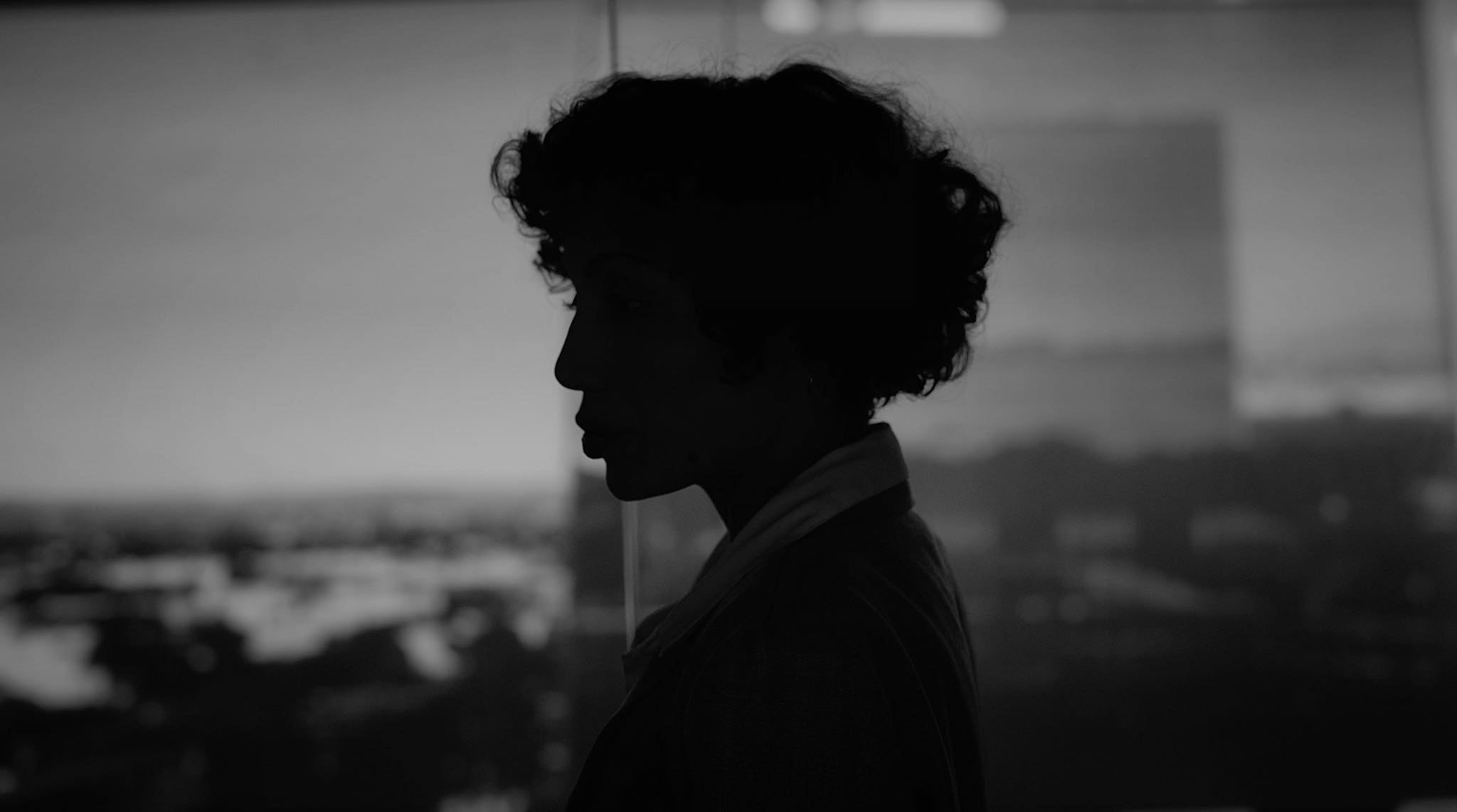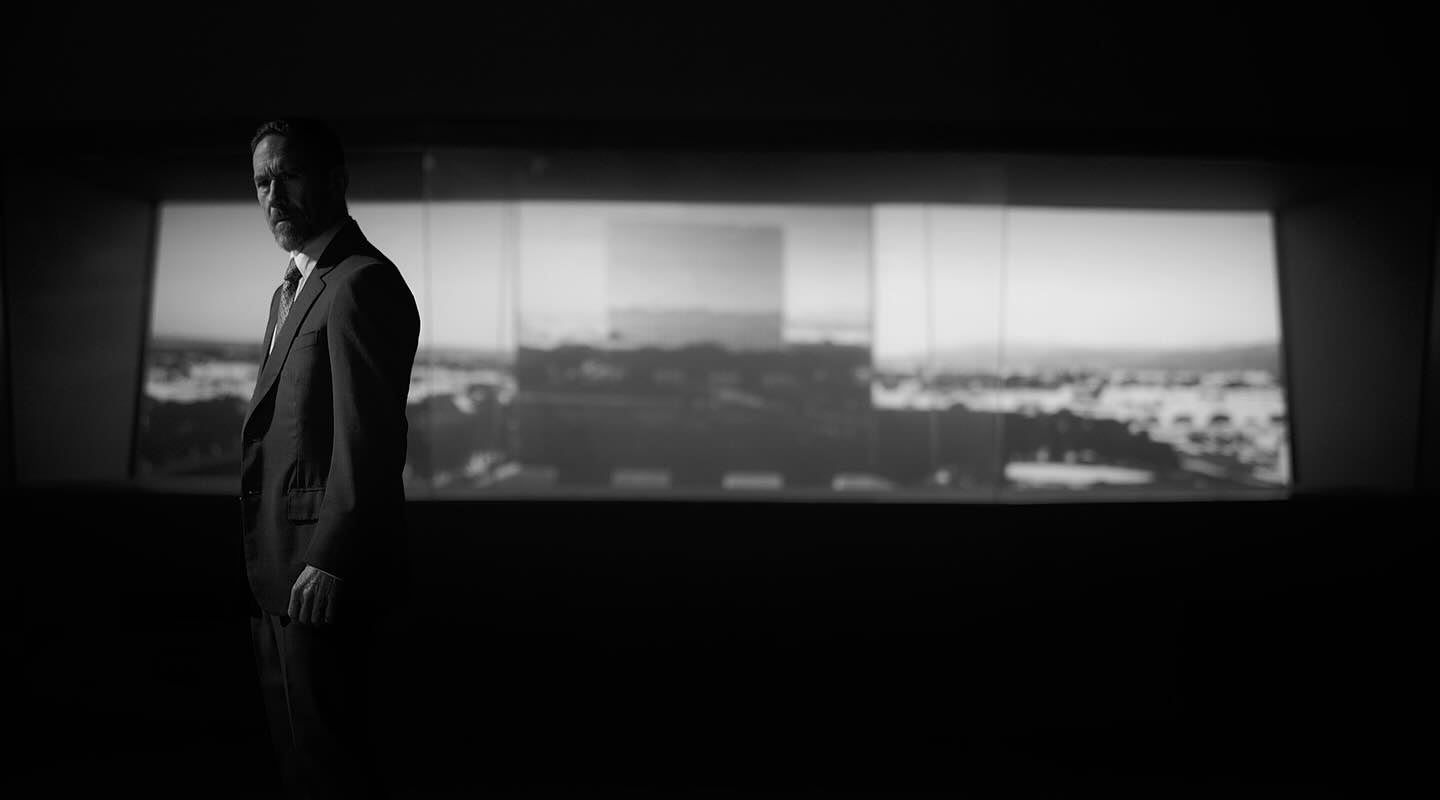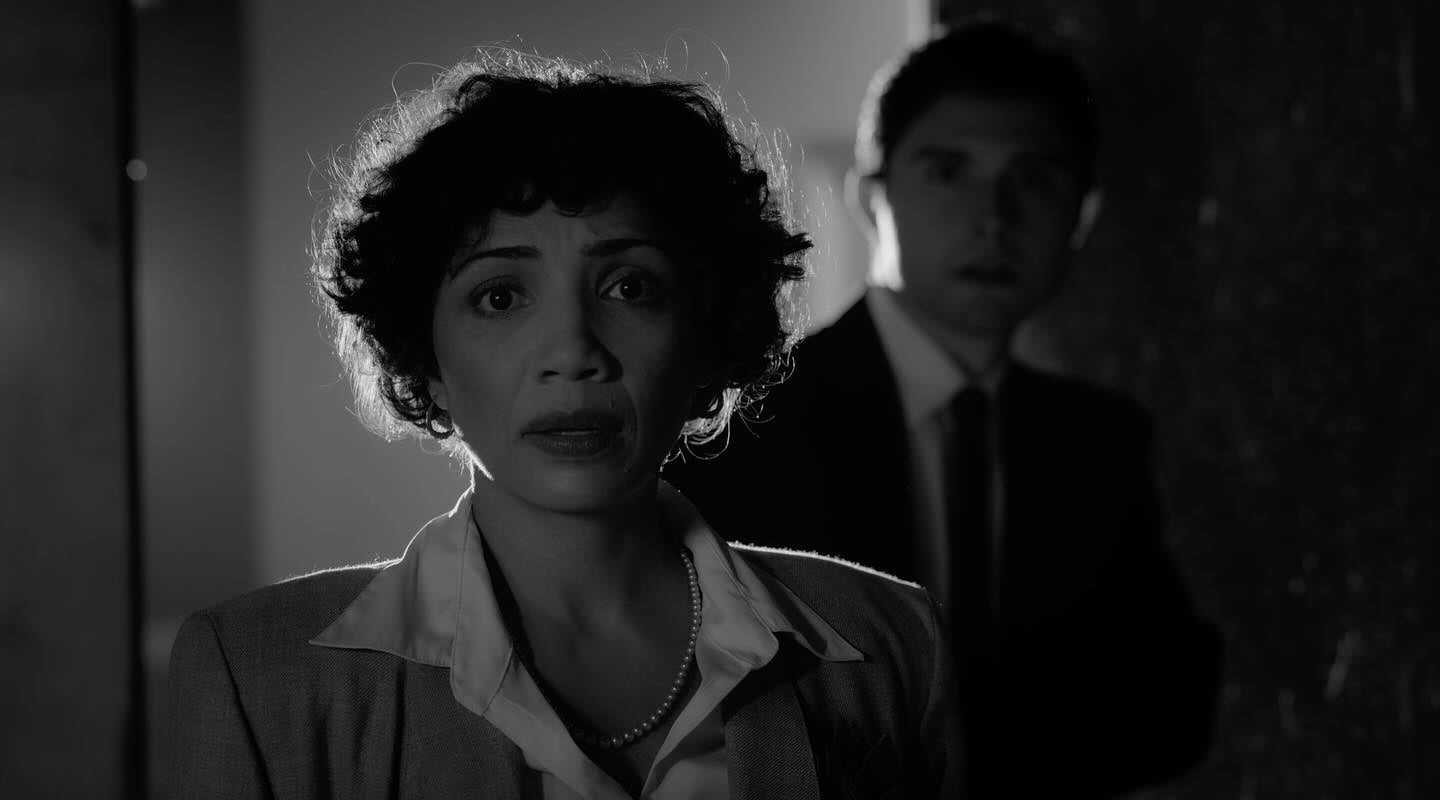
05-01-2024 - Case Study
Shot on BURANO: DP Elle Schneider Creates Striking Black and White Sci-Fi Noir
By: Oakley Anderson-Moore
Cinematographer Elle Schneider has an eye for edgy visuals.
From arty music videos for Speedy Ortiz and Isla June, genre films like Near to Superstition, and creative historical recreations in The Food that Built America, Schneider seeks out unconventional ways of telling a story.
“I'm very invested in how the image itself can be a storytelling tool beyond just looking good,” explains Schneider to Sony Cine.
Her latest work, There Is No Antimemetics Division, is no exception. Starring Jasika Nicole, Neil Napier, and Mateus Ward, the debut short film of accomplished writer/producer Adria Lang, features striking black and white visuals captured on the Sony BURANO.
Shooting the black and white, Creative Commons world of There Is No Antimemetics Division
The source of the film’s story is highly unusual – There Is No Antimemetics Division emerged from a collaborative wiki-based science fiction universe crafted by many authors that became a novel by qntm in 2021.
During the strike, Lang approached Schneider about her plan to adapt a section of the novel as a short film.
“Adria is a storied, well-respected TV writer and producer,” describes Schneider. “She's worked on some really amazing shows that people know and love, with even more on the horizon.
But after writing for a decade, she wanted to show what she can do as a director.”
Schneider loved the background of the story and its driven characters, and Lang’s concept of leaning into the noir aspects of a long interrogation scene.
“I’m a big fan of high contrast,” says Schneider. “I'm a big fan of using light for emotional storytelling and not just because a certain look is on trend. I love shooting in monochrome to take advantage of these visual tools. A lot of my projects are very arty and they're able to include elements of black and white imagery in them. But I've been wanting to focus on that aesthetic in a single project for a while now. I was very grateful when Adria made the creative choice to shoot the majority of the film in black and white, creating a highly stylized liminal space for our actors to play in. It was a great experience.”

Why the BURANO digital cinema camera fit the Goldilocks zone for high-end visuals on an indie set
“I've always been a fan of smaller, lightweight cameras because I believe that the ergonomic versatility of small cameras allows you to be more spontaneous and therefore more artistic, both in angles and in movements,” describes Schneider.
In December, as Schneider began preparing for the film, she started to wonder if the BURANO might be the perfect fit after seeing the camera for the first time at Band Pro in Los Angeles. Since There Is No Antimemetics Division would be the director’s first film, she wanted the visuals to be as high quality as possible even on a short film budget and schedule. Schneider knew the camera would be paired with beautiful, robust Angenieux Optimo Prime lenses, which under normal circumstances, would warrant a physically large camera package. She also knew that a significant portion of the film would be shot on Steadicam to heighten the momentum of the story.
“I felt like using the VENICE would be too big for this particular project. Our crew was small and we needed to move fast. Even pulling out the Rialto system wouldn't have made sense for this. I love the FX6, but there are some more professional features that were going to be available within the BURANO that I was curious about. Being able to shoot this on that camera was really the Goldilocks moment of finding exactly the right camera for a project. It is small and independent and fast, but still delivers the same type of image quality that a theatrical film would call for.”

Using the BURANO’s internal ND and 8K sensor to maximize production value
When Schneider started principal photography on There Is No Antimemetics Division, she had only seen the BURANO in person once before.
“On one hand, is it absolutely insane to shoot a film on a brand new camera you've never used before, that you cannot prep more than a day in advance?” jokes Schneider.
“Yes! But I appreciate that Sony has maintained a consistency of use and information and terminology through their camera line, because it makes it easy to pick up any of these tools and use them. As an FX3 and FX6 user, I was able to pick it up and already know exactly how it worked and find everything that I needed to find in the menu system, which on an independent film where there isn't a lot of prep time, is absolutely crucial.”
Schneider utilized a monochrome Noir LUT to monitor on set in black and white, so Lang and the crew would be able to get as close to the final look in camera as possible.
Their location, a huge stage in a 1980s era recording studio, was perfect for the sci-fi feel of the story, but came with challenges like a delicate sound absorbing ceiling that you couldn’t hang lights on, and a large, reflective interior window covered by a front projection gag. Equipped with the yet unreleased Aputure INFINIMAT light as a key and the BURANO’s internal Variable ND, Schneider was able to create a gorgeous look in the space while taking advantage of the Burano’s dynamic range to capture a wide range of tones, even in darkness.
“Being able to adjust the Variable ND was a lifesaver in an environment that was often very dark, and where we could only place lights in specific places due to a constantly moving camera” describes Schneider, who utilized both 800 and 3200 base ISOs on the film.
“Because our schedule was so ambitious, we wanted to keep the camera as light as possible, and we weren't using filtration to retain a clean, sharp look. It allowed us to really just keep things stripped down, which was great, especially for the Steadicam operators.”
There was one other interesting way in which the BURANO came to the rescue on the indie shoot.
“We actually used the different resolution modes to reframe shots,” says Schneider.
“On this shoot, we were very lucky to have a lot of favors and loans and friend rates on rentals. As with all independent films, that comes with compromise. One compromise on this was we only had a limited number of focal lengths of lenses to choose from. There was nothing in the middle between 24mm and 75mm. We actually used the different framing modes within the BURANO to give us a little bit of extended room when we needed it. We recorded predominantly in 6K XOCN and jumped up to the 8K when we needed a wider frame. That’s a very untraditional way to use a camera like this to solve creative challenges. DPs are going to be pearl-clutching about that a little bit. But it's just another way that having versatile camera tools allows you to pull rabbits out of the hat when the project calls for it.”

Why Schneider prefers to work with a crew comprised of artists
For Schneider, it’s great to have people on your team who are good at their job, but it’s even more important that they be artists invested in collaboration.
“The majority of the crew that I work with on independent projects are not folks who ‘stay in their lane’ in a traditional sense,” says Schneider.
“I have gaffers who DP. I have ACs who direct. I have key grips who are actors. It’s important that they're great at their job, but in a collaborative way. When you work on an independent film, there's often five different fires to put out before clicking the Record button. You can only focus on three. Two might be burning outside your peripheral vision. Having great collaborators on set with a wide variety of experiences helps you make the best work in that environment. They’re invested in creating art, and that's who I want on my team.”
For There Is No Antimemetics Division, Schneider’s camera and G&E team consisted of AC Sophia Cacciola, Gaffer Lisa Tom, Key Grip B Payne, Grip Aria Brice, and Steadicam operators Jessica Lopez and Niels Lindelien.
Keep an eye out for There Is No Antimemetics Division when it hits film festivals.




